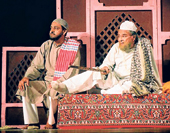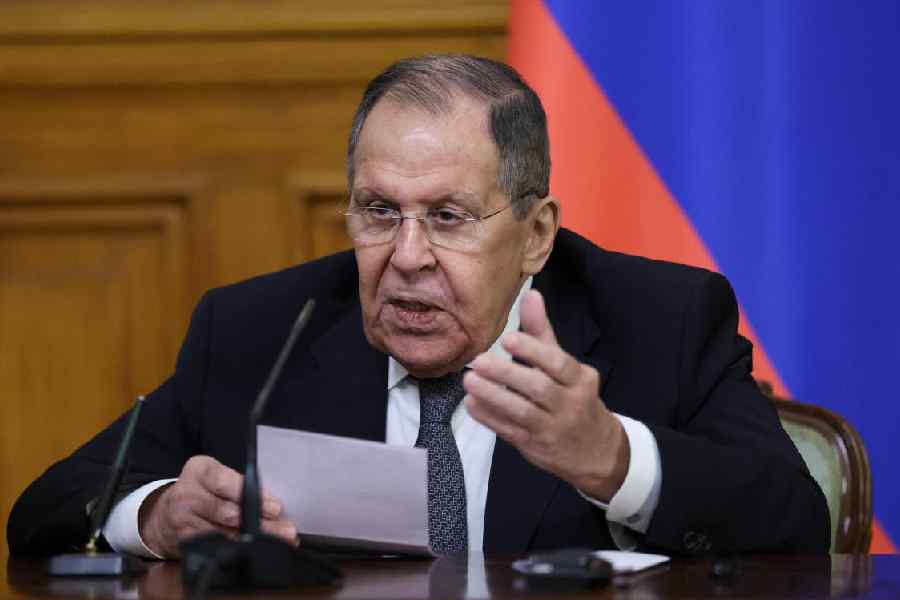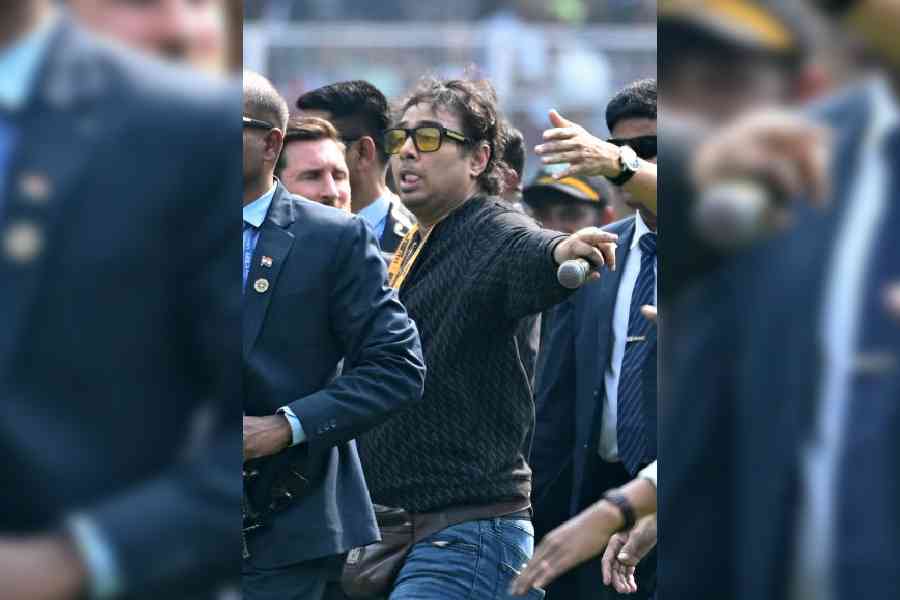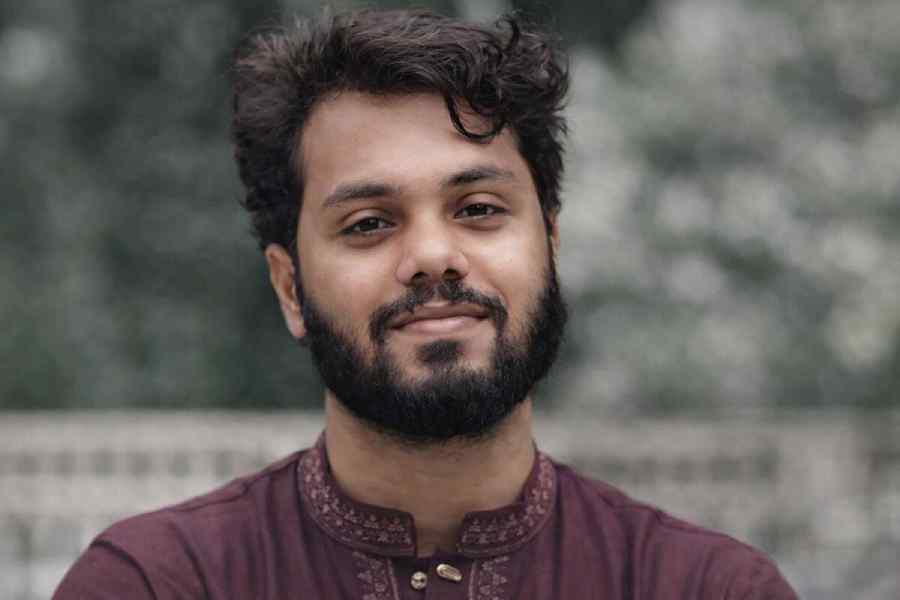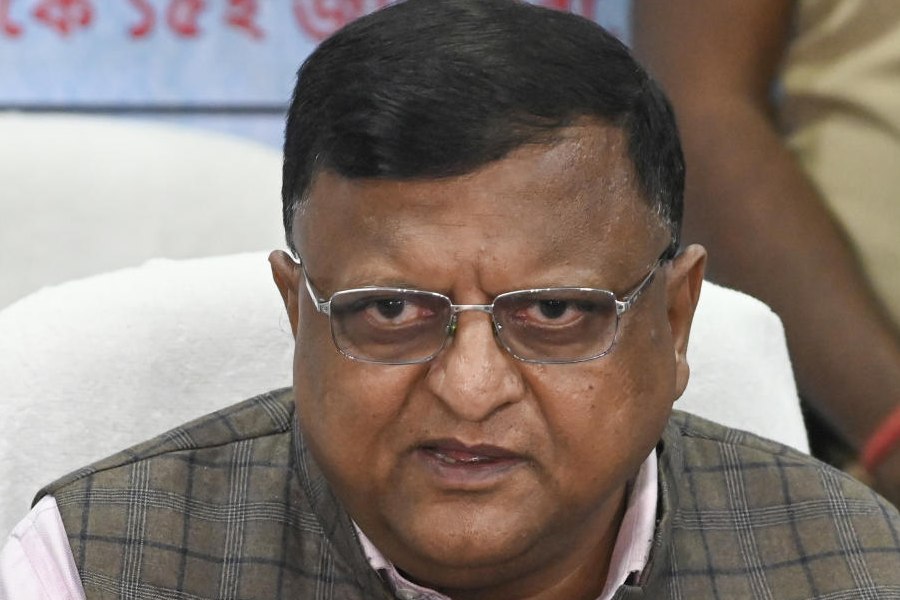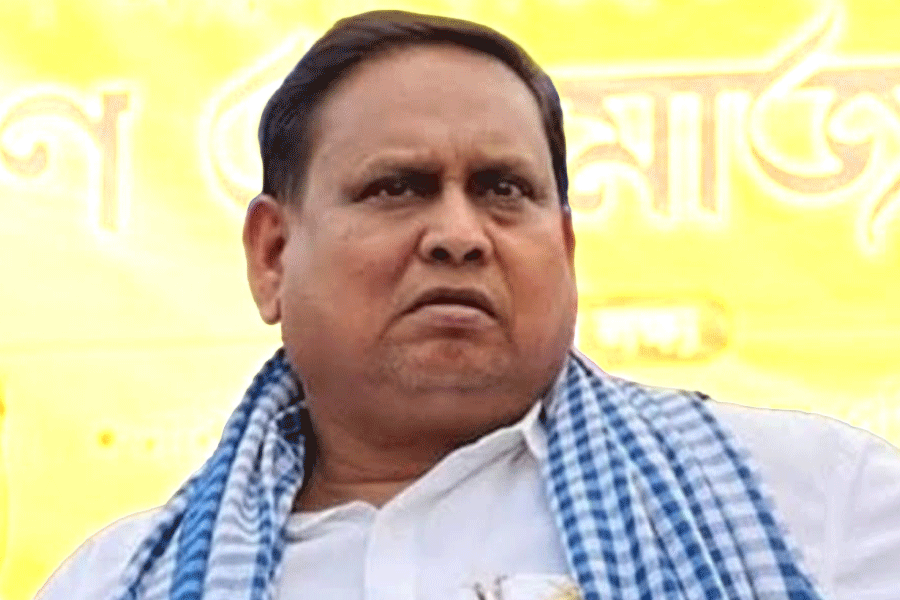 |
| Manoj Mitra in a scene from Galpo Hekim Saheb |
Playwright , actor, director — that’s the order in which Manoj Mitra prefers his triple roles. With over 80 plays, the Sangeet Natak Academy Award and the Asiatic Society Gold Medal for contribution to dramatic literature to his credit, Mitra still regrets he “can’t give his first love (playwriting) as much time” as he wants. Like Kanchuki Thakur of his more recent play Ja Nei Bharotey who at age 113 says he is just 13, Mitra is bustling with energy, regardless of a major heart surgery a few years back.
Up at dawn for his walk through the jhow-lined avenues of Salt Lake, Mitra juggles time between his numerous film, drama and literary commitments. Barely back from the Banga Sanskriti Sammelan in Canada where two of his plays were staged, Mitra must shoulder the responsibility of his theatre group Sundaram in the midst of its golden jubilee celebrations. And still “longing to put two new plays to paper” arrive punctually for a film-dubbing schedule at Chitrabani.
Q: Beginning with Tapan Sinha’s National Award winning Banchharamer Bagaan (based on your play Sajano Bagaan), you have acted in various other films by Sinha, Satyajit Ray, Buddhadeb Dasgupta, Basu Chatterjee, Tarun Majumdar, Shakti Samanta and Goutam Ghosh. Yet you have simultaneously rendered major roles in Sundaram’s productions. Why this constant movement from film to stage and back?
The actor in me seeks fulfilment. It is essential for stage actors to explore various mediums to master the mind and body. Films can capture what is generally lost to theatre audiences beyond the third row — the subtlest shadow of grief on your face, the innermost sparkle in your eyes — (smiling) that is an offer I can not refuse.
 |
| Mitra: Playwright, actor, director. Picture by Aranya Sen |
Q: Your family used to patronise theatrical productions at your birthplace Satkhira in Bangladesh, and your first appearance was in Sirajer Swapna, a school play at Basirhaat. When did you really decide to become an actor?
While still in the first year in Scottish Church college, where everyone was theatre crazy, Parthapratim Chowdhury and some other friends and me formed the theatre group Sundaram.
Ahindra Chaudhury had come for a Sundaram production, Mrityur Chokhe Jal. When he came backstage to congratulate me for my uninhibited, natural acting, in which every action was logically accounted for, I was thrilled because that was what I had wanted to achieve.
Q: Mrityur Chokhe Jal was also your first play. How did you come to write it? Didn’t you begin as a short story writer ? Is that why there is a strong narrative element in your plays?
No, no the narrative is never important in my plays. It is like a picture frame or the string with which to lace various observations, experiences, events. Often it is easier that way, the pure concept of Brahma is more comprehensible through the stories of the Upanishads, chants and rituals. In any case the way narratives grow out of theatre is completely different from that of stories and novels.
But yes, short stories were what I wrote while in school and in college. I was editor of wall magazines and several literary magazines like Yatri, Chhoto Galpo, Kalpana, Joyoti, and Prabashi. My stories were published in the junior Jugantar, Anandamela and Bashumati.
If Parthapratim had not asked me to write something for a one-act play competition at Theatre Centre I may not have stayed up all night writing Mrityur Chokhe Jal. The play grounded on real, lived experience, with dialogue that one uses naturally — something new then — won first prizes from Theatre Centre and All India Radio contests. And perhaps because it was received so well, I have written several books on theatre and retired as Sisir Kumar Bhaduri professor of drama from RBU, but I never became a short story writer.
Q: But it’s not just the real lived, experience that we get in your plays. In fact it is rather a magical mix of comedy-tragedy, real and inexplicable. Even the villains are not all black. Is this connected with your worldview, the way you see life?
Absolutely! The events of life to me are like a pack of cards, how you perceive them is what makes them comical or tragic.
As a writer you play with them when you show the cards, all the colours one after the other. The presentation may become a tragedy, but the moment you hide a couple of cards it becomes the basis for comedy.
Even the laughter in my play is not just laughter. The stick dipped into water looks crooked but it doesn’t really bend, what changes is just the perception. The same subject can be treated differently, Sajaano Bagan, Kenaram Becharam, Parabas could all have been grim tragedies.
My villains and heroes likewise cannot be all black or all white. That is not how they are in real life. The touch of awe or the inexplicable element is what all playwrights aspire for because without a new concept or experience theatre is bland and meaningless.
Q: Your group Sundaram has completed 50 years. How do you summarise its development?
I am rather proud of my group for presenting worthwhile original productions one after the other. Even before my plays like Sajano Bagaan, Sovajatra, Alokanandar Putra Kanya, Galpo Hekim Saheb, Chhayar Prasad, Ranger Haat, Operation Bhomragar and Mesh O Rakhash they were doing plays written by Parthapratim Chowdhury. They are already working on my Ja Nei Bharotey. We have just brought out an anthology by theatre scholars and stalwarts on 50 years of Bengali theatre.

